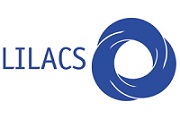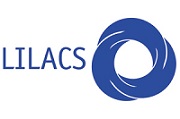Toxicodermia en paciente con COVID-19. Reporte de caso
Toxicoderma as an adverse event in a COVID-19 patient: case report
DOI:
https://doi.org/10.15446/cr.v7n1.88223Palabras clave:
COVID-19, Hidroxicloriquina, Infecciones por Coronavirus, Efectos Colaterales y Reacciones Adversas Relacionados con Medicamentos, Lopinavir (es)COVID-19, Coronavirus Infections, Drug-Related Side Effects and Adverse Reactions, Medication Therapy, Lopinavir (en)
Descargas
Introducción. La infección por SARS-COV2, que en principio se pensó solo causaba manifestaciones respiratorias, también puede ocasionar síntomas gastrointestinales, renales, neurológicos, cardiovasculares e incluso cutáneos según algunos reportes.
Presentación del caso. Paciente femenina de 36 años quien asistió al servicio de urgencias por cuadró clínico consistente en disnea, astenia, adinamia, odinofagia leve y cefalea. Como antecedentes de relevancia se registró obesidad, tabaquismo y ocupación como trabajadora de la salud. Dados los síntomas, se indicó tratamiento antimalárico y antirretroviral para tratar COVID-19, diagnóstico que fue confirmado a los tres días de ingreso, pero al cuarto día de instaurado este manejo la mujer presentó polidipsia y rash macular, pruriginoso y generalizado. Por sospecha de toxicodermia, el tratamiento fue suspendido y con esto el cuadro cutáneo mejoró. Luego de 8 días de hospitalización, la paciente recibió el alta, junto con recomendaciones de bioseguridad y confinamiento durante 28 días.
Conclusiones. El caso descrito corresponde a un evento de toxicodermia en una paciente con COVID-19 en manejo con antirretroviral y antimalárico. A partir de los hallazgos, se establece que la exploración minuciosa de piel y mucosas en los pacientes con sospecha o diagnóstico confirmado de COVID-19 puede ser de gran ayuda para la correcta caracterización de esta nueva enfermedad.
Introduction: SARS-COV2 infection, which was initially associated with respiratory manifestations only, can also cause gastrointestinal, kidney, neurological and cardiovascular symptoms according to some reports.
Case presentation: A 36-year-old female patient attended the emergency department due to dyspnea, asthenia, adynamia, mild odynophagia. and headache. The patient's medical history included obesity, smoking, and working as a health care worker. Considering the symptoms, antimalarial and antiretroviral treatment was indicated to treat COVID-19, a diagnosis that was confirmed three days after admission. However, on the fourth day of treatment, the patient presented with polydipsia and macular, pruritic, and generalized rash. Due to suspicion of toxicoderma, the treatment was suspended, and the skin condition improved. After 8 days of hospitalization, the patient was discharged with biosecurity recommendations and mandatory isolation for 28 days.
Conclusion: The described case is a report of toxicoderma in a patient with COVID-19 under treatment with antiretroviral and antimalarial drugs. Based on the findings, a thorough examination of skin and mucosa of patients with suspected or confirmed COVID-19 will undoubtedly contribute to the correct characterization of this new disease.
https://doi.org/10.15446/cr.v7n1.88223
Toxicoderma as an adverse event in a COVID-19 patient: case report
Keywords: COVID-19; Coronavirus Infections; Drug-Related Side Effects and Adverse Reactions; Medication Therapy; Lopinavir.
Palabras clave: COVID-19; Infecciones por coronavirus; Efectos colaterales y reacciones adversas relacionados con medicamentos; Hidroxicloroquina; Lopinavir.
Kelly Rocío Chacón-Acevedo
Liliana Isabel Barrero-Garzón
Eduardo Low-Padilla
Keralty - Presidencia Global
de Salud e Innovación -
Instituto Global de Excelencia Clínica (IGEC) - Bogotá D.C. - Colombia.
Nancy Yomayusa-González
Keralty - Presidencia Global de Salud e
Innovación - Instituto Global de Excelencia
Clínica (IGEC) - Bogotá D.C. - Colombia.
Fundación Universitaria Sanitas -
IGEC Translational Research Group -
Bogotá, D.C. - Colombia.
Karen Lorena Rincón-Ramírez
Keralty - Presidencia Global de Salud
e Innovación - Keralty Model and Program
Management - Bogotá D.C. - Colombia.
Sandra Pérez
Clínica Universitaria Colombia -
COVID-19 Area -
Bogotá D.C. - Colombia.
Laura Cristina Nocua-Báez
Clínica Universitaria Colombia - Department of Internal Medicine - Bogotá D.C. - Colombia.
Jeffrey Castellanos
Clínica Universitaria Colombia - Department
of Cardiology - Bogotá D.C. - Colombia.
Corresponding author
Kelly Rocío Chacón-Acevedo.
Instituto Global de Excelencia Clínica, Presidencia Global de Salud e Innovación, Keralty.
Bogotá D.C. Colombia.
E-mail: krchacon@colsanitas.com.
Received: 16/05/2020 Accepted: 26/09/2020
Resumen
Introducción. La infección por SARS-COV2, que en principio se pensó solo causaba manifestaciones respiratorias, también puede ocasionar síntomas gastrointestinales, renales, neurológicos, cardiovasculares e incluso cutáneos según algunos reportes.
Presentación del caso. Paciente femenina de 36 años quien asistió al servicio de urgencias por cuadró clínico consistente en disnea, astenia, adinamia, odinofagia leve y cefalea. Como antecedentes de relevancia se registró obesidad, tabaquismo y ocupación como trabajadora de la salud. Dados los síntomas, se indicó tratamiento antimalárico y antirretroviral para tratar COVID-19, diagnóstico que fue confirmado a los tres días de ingreso, pero al cuarto día de instaurado este manejo la mujer presentó polidipsia y rash macular, pruriginoso y generalizado. Por sospecha de toxicodermia, el tratamiento fue suspendido y con esto el cuadro cutáneo mejoró. Luego de 8 días de hospitalización, la paciente recibió el alta, junto con recomendaciones de bioseguridad y confinamiento durante 28 días.
Conclusiones. El caso descrito corresponde a un evento de toxicodermia en una paciente con COVID-19 en manejo con antirretroviral y antimalárico. A partir de los hallazgos, se establece que la exploración minuciosa de piel y mucosas en los pacientes con sospecha o diagnóstico confirmado de COVID-19 puede ser de gran ayuda para la correcta caracterización de esta nueva enfermedad.
Palabras clave: COVID-19; Infecciones por coronavirus; Efectos colaterales y reacciones adversas relacionados con medicamentos; Hidroxicloroquina; Lopinavir.
Abstract:
Introduction: SARS-COV2 infection, which was initially associated with respiratory manifestations only, can also cause gastrointestinal, kidney, neurological and cardiovascular symptoms according to some reports.
Case presentation: A 36-year-old female patient attended the emergency department due to dyspnea, asthenia, adynamia, mild odynophagia. and headache. The patient’s medical history included obesity, smoking, and working as a health care worker. Considering the symptoms, antimalarial and antiretroviral treatment was indicated to treat COVID-19, a diagnosis that was confirmed three days after admission. However, on the fourth day of treatment, the patient presented with polydipsia and macular, pruritic, and generalized rash. Due to suspicion of toxicoderma, the treatment was suspended, and the skin condition improved. After 8 days of hospitalization, the patient was discharged with biosecurity recommendations and mandatory isolation for 28 days.
Conclusion: The described case is a report of toxicoderma in a patient with COVID-19 under treatment with antiretroviral and antimalarial drugs. Based on the findings, a thorough examination of skin and mucosa of patients with suspected or confirmed COVID-19 will undoubtedly contribute to the correct characterization of this new disease.
Keywords: COVID-19; Coronavirus Infections; Drug-Related Side Effects and Adverse Reactions; Medication Therapy; Lopinavir.
Introduction
COVID-19 is an infectious disease caused by the SARS-CoV-2 virus. The first cases were reported in December 2019 and it was declared a pandemic by the World Health Organization in March 2020 given the high rate of contagion and rapid global spread. Such is the impact of this condition that about 36.3 million cases and one million deaths had been reported by mid-October 2020 worldwide (1).
The SARS-CoV-2 infection has been characterized mainly by respiratory symptoms; however, since the onset of the pandemic, different manifestations of the disease have been reported, including gastrointestinal, kidney, neurological, and cardiovascular symptoms (2-4). Although less common, skin manifestations associated with COVID-19 have also been reported (5).
The following is the first case of an adult patient diagnosed with COVID-19 in Bogotá, Colombia, who presented with skin manifestations due to an adverse dermatological reaction associated with the therapy established to treat this disease. It is worth mentioning that, at the time of writing this case report, there is no proven treatment for patients with COVID-19.
Case presentation
A 36-year-old female patient from Bogotá, with low socioeconomic status and a health care worker, was admitted to the emergency department of a quaternary care center located in Bogotá due to dyspnea, asthenia, adynamia, mild odynophagia, and headache. The woman reported a history of obesity, smoking and epidemiological nexus with COVID-19.
Although the patient was alert and oriented on admission, tachycardia and tachypnea were observed; during the physical examination, she had wet mucous membranes, anicteric sclerae, normochromic conjunctiva, no adventitious sounds, and skin in normal condition. Lab test results yielded the following values: lactate dehydrogenase: 191.8 U/L, hemoglobin: 14.2 g/dL, leukocytes: 6 130 (cells/mL), neutrophils: 64.5%, lymphocytes: 22.3% and platelets: 152 000 (cells/mL). Furthermore, computerized axial tomography of the chest was performed, which showed ground-glass opacity in the middle lobe medial segment. She was admitted to the hospital, and a nasopharyngeal swab was collected to perform an RT-PCR test and confirm the diagnosis of COVID-19; the result of this test was available 3 days later and was positive.
From the first day of hospital stay, compassionate drug treatment (6) was initiated with dual therapy (antimalarial and antiretroviral). Hydroxychloroquine 200mg every 12 hours prior to a 400mg intravenous loading bolus and lopinavir plus ritonavir 400mg every 12 hours were administered. On the fifth day of symptom onset and fourth day of treatment, the patient presented polydipsia and macular, pruritic, and generalized rash that started in the face and advanced to the trunk and limbs with macules and papules that disappeared when pressed, without mucosal involvement.
Given the new symptoms, a sample was taken for arterial blood gases. pH was 7.33, pCO2 68.3, pCO3 16.9, and lactate 4.03 mmol. A single dose of hydrocortisone 200mg IV was administered; however, pruritic rash and facial warmth persisted, so loratadine 10mg every 12 hours was prescribed for one day, followed by a switch to diphenhydramine hydrochloride 50mg every 12 hours orally for 2 days. On day six of hospitalization, and due to suspected toxicoderma, antimalarial and antiretroviral treatment was discontinued, resulting in improved skin symptoms.
The patient was discharged after eight days of hospitalization; during that period, no supplemental oxygen or ventilatory support was required, but she did present an episode of fever treated with ampicillin/sulbactam (3g every 6 hours) and piperacillin/tazobactam (4.5g every 6 hours). On discharge, recommendations were given for 28-day isolation and antibiotic treatment with oral moxifloxacin.
Discussion
At the time of writing this case report, a dilemma arose as to whether to consider the patient’s skin symptoms as a cutaneous manifestation associated with COVID-19 or as an adverse reaction to the use of hydroxychloroquine and lopinavir/ritonavir for the treatment of that disease. Given this scenario, the available literature was reviewed, and some case reports and case series were found documenting skin manifestations associated with COVID-19 and a single report of an adverse event due to chloroquine use.
The first series of cases published was prepared by Recalcati (7), who, from a cohort of 88 cases with COVID-19 treated at the Lecco Hospital in Lombardy, Italy, established that 18 patients developed skin manifestations, of which 8 had skin involvement on admission and 10 after hospitalization. The lesions identified in this study were erythematous rash (14 patients), generalized urticaria (3 patients), and varicelliform eruptions (1 patient). The most compromised body region was the chest with mild or absent pruritus and spontaneous resolution of the lesions within a few days.
Another case series in 8 dermatological units reported skin lesions in 22 patients with COVID-19, who presented with slightly pruritic papulovesicular varicelliform exanthem, predominantly thoracic, with a range of 4 to 15 days of duration and without facial or mucosal involvement. Other associated symptoms were fever (95.5%), cough (73%), headache (50%), asthenia (50%), rhinorrhea (45%), dyspnea (41%), hyposmia (18%), hypogeusia (18%), odynophagia (4.5%), diarrhea (4.5%), and myalgia (4.5%) (8).
Magro et al. (9) attempted to define the role of complement system activation and microvascular thrombosis in 5 patients with severe and persistent manifestations of COVID-19. To this end, they studied lung and skin tissue with lesions (retiform purpura) and without lesions, finding deposits of terminal complement components C5b-9 and C4d in the microvasculature. This suggested that some serious cases of this disease may have a microvascular lesion syndrome mediated by the pathways of complement activation and an associated procoagulant state.
Also, some case reports describe skin manifestations in adults and children such as petechiae, erythema, rash, urticaria, and livedo reticularis in the presence of COVID-19, although most of these patients are asymptomatic and have no histologic support (10-13). Finally, Hunt & Koziatek (14) published the case of a patient with SARS-CoV-2 infection who had generalized fever and rash, maculopapular and non-pruritic morbilliform eruptions, and required ICU management.
Toxicoderma is an adverse skin reaction associated with the use of medicines. Its clinical presentation may vary in terms of injury types and severity, so the diagnosis must be rapid and accurate to establish appropriate treatment (15). Maculopapular rash is a common manifestation of toxicoderma located mainly in the limbs and trunk and does not affect the mucous membranes. Toxicoderma lesions resolve with discontinuation of the causal drug (16). It should be noted that Huang et al. (17) reported the presentation of rash as an adverse event in a patient with COVID-19 who received chloroquine.
With this in mind, and in the face of the clinical case presented, it was established that the dermatological manifestation of the patient was an adverse event to treatment with hydroxychloroquine and lopinavir/ritonavir since there was initial facial involvement, accompanied by flushing and heat, which improved after discontinuation of this treatment.
It is worth remembering that the use of hydroxychloroquine and litonavir/ritonavir for the compassionate management of COVID-19 was initially based on the compatibility of SARS-CoV-2 with other viruses (studied in vitro and modeled). However, its use is not recommended currently due to the adverse cardiovascular events that they may cause (18).
Currently, physicians and scientists are investigating the skin manifestations of COVID-19, their physiopathological mechanism, and characteristics in different population groups. They emphasize the importance of promoting among clinicians the identification of skin lesions without apparent cause, as they may be diagnostic tools that guide the clinical suspicion of COVID-19 and the implementation of preventive isolation measures that contribute to reducing virus transmission (19-21). In this way, a thorough examination of the skin and mucous membranes of patients with confirmed or suspected COVID-19 helps to correctly characterize this new disease and establish its possible relationship with adverse drug reactions, as happened in the present case.
In summary, the authors consider it necessary for health professionals to report adverse events associated with compassionate drugs since this information will guide clinical practice, at least while drug efficacy and safety results for COVID-19 are available.
This report recognizes as a limitation that no confirmatory biopsy of the skin manifestation was performed.
Conclusions
According to the findings and the literature, the case described is an event of toxicoderma in a patient with COVID-19 under antiretroviral and antimalarial treatment. However, it is clear that there is still much to be said about this disease, and further research on its manifestations is needed.
In this sense, a thorough examination of the skin and mucous membranes of patients with suspected or confirmed diagnosis of COVID-19 will be useful to characterize the disease correctly.
Ethical considerations
The present report did not pose any risk to the patient because it synthesized retrospective information. The patient consented to the review of her medical records and authorized the publication of her case for academic and scientific purposes.
Conflicts of interest
None stated by the authors.
Funding
None stated by the authors.
Acknowledgments
None stated by the authors.
References
1.Johns Hopkins University & Medicine. COVID-19 Dashboard by the Center for Systems Science and Engineering (CSSE) at Johns Hopkins University (JHU). Baltimore: Johns Hopkins Coronavirus Resource Center; 2020 [cited 2020 Oct 30]. Available from: https://bit.ly/2ZpmnnB.
2.Huang C, Wang Y, Li X, Ren L, Zhao J, Hu Y, et al. Clinical features of patients infected with 2019 novel coronavirus in Wuhan, China. Lancet. 2020;395(10223):497-506. https://doi.org/ggjfnn.
3.Zhou F, Yu T, Du R, Fan G, Liu Y, Liu Z, et al. Clinical course and risk factors for mortality of adult inpatients with COVID-19 in Wuhan, China: a retrospective cohort study. Lancet. 2020;395(10229):
1054-62. https://doi.org/ggnxb3.
4.Naicker S, Yang CW, Hwang SJ, Liu BC, Chen JH, Jha V. The Novel Coronavirus 2019 epidemic and kidneys. Kidney Int. 2020;97(5):824-8. https://doi.org/ggppq2.
5.Galván-Casas C, Català A, Carretero-Hernández G, Rodríguez-Jiménez P, Fernández-Nieto D, Rodríguez-Villa Lario A, et al. Classification of the cutaneous manifestations of COVID-19: a rapid prospective nationwide consensus study in Spain with 375 cases. Br J Dermatol. 2020;183(1):71-7. https://doi.org/ggv3tn.
6.Kalil AC. Treating COVID-19—Off-Label Drug Use, Compassionate Use, and Randomized Clinical Trials During Pandemics. JAMA. 2020;323(19):1897-8. https://doi.org/ggq7bx.
7.Recalcati S. Cutaneous manifestations in COVID-19: a first perspective. J Eur Acad Dermatol Venereol. 2020;34(5):e212-3. https://doi.org/ggq8mf.
8.Marzano AV, Genovese G, Fabbrocini G, Pigatto P, Monfrecola G, Piraccini BM, et al. Varicella-like exanthem as a specific COVID-19-associated skin manifestation: multicenter case series of 22 patients. J Am Acad Dermatol. 2020;83(1):280-5. https://doi.org/ggs9r9.
9.Magro C, Mulvey JJ, Berlin D, Nuovo G, Salvatore S, Harp J, et al. Complement associated microvascular injury and thrombosis in the pathogenesis of severe COVID-19 infection: a report of five cases. Transl Res. 2020;220:1-13. https://doi.org/ggswwx.
10.Genovese G, Colonna C, Marzano AV. Varicella-like exanthem associated with COVID-19 in an 8-year-old girl: A diagnostic clue? Pediatr Dermatol. 2020;37(3):435-6. https://doi.org/ggtwhd.
11.Najarian DJ. Morbilliform Exanthem Associated with COVID-19. JAAD Case Rep. 2020;6(6):493-4. https://doi.org/ggtwh7.
12.Alramthan A, Aldaraji W. Two cases of COVID-19 presenting in clinical picture resembling chilblains disease. First report from the Middle East. Clin Exp Dermatol. 2020;455(6):746-8. https://doi.org/ggs9zz.
13.Manalo IF, Smith MK, Cheeley J, Jacobs R. A dermatologic manifestation of COVID-19: Transient livedo reticularis. J Am Acad Dermatol. 2020;83(2):700. https://doi.org/ggtsjf.
14.Hunt M, Koziatek C. A Case of COVID-19 Pneumonia in a Young Male with Full Body Rash as a Presenting Symptom. Clin Pract cases Emerg Med. 2020;4(2):219-21. https://doi.org/fqmp.
15.Aguilar-Escobar J, Calvi-Fernández R. Toxicodermias. Erupciones cutáneas por fármacos. Gac Méd Bol. 2008;31(1):68-68.
16.Bielsa-Marsol I. Ferrándiz. Dermatología clínica. 5th ed. Barcelona: Elsevier; 2019.
17.Huang M, Tang T, Pang P, Li M, Ma R, Lu J, et al. Treating COVID-19 with Chloroquine. J Mol Cell Biol. 2020;12(4):322-5. https://doi.org/ggq72g.
18.Administración de Medicamentos y Alimentos (FDA). FDA cautions against use of hydroxychloroquine or chloroquine for COVID-19 outside of the hospital setting or a clinical trial due to risk of heart rhythm problems. Silver Spring: FDA; 2020.
19.Fernandez-Nieto D, Ortega-Quijano D, Segurado-Miravalles G, Pindado-Ortega C, Prieto-Barrios M, Jimenez-Cauhe J. Comment on: Cutaneous manifestations in COVID-19: a first perspective. Safety concerns of clinical images and skin biopsies. J Eur Acad Dermatol Venereol. 2020;34(6):e252-4. https://doi.org/ggs9r8.
20.Grant-Kels JM, Sloan B, Kantor J, Elston DM. Letter from the Editors: Big Data and Cutaneous Manifestations of COVID-19. J Am Acad Dermatol. 2020;83(2):365-6. https://doi.org/ggs9xd.
21.National Institutes of Health. Consequences of Intensified Handwash and Hand Disinfection Among Children During the COVID19 Pandemic. Washington: ClinicalTrials.gov; 2020 [cited 2021 Jan 14]. Available from: https://bit.ly/35DViAC.
Referencias
Johns Hopkins University & Medicine. COVID-19 Dashboard by the Center for Systems Science and Engineering (CSSE) at Johns Hopkins University (JHU). Baltimore: Johns Hopkins Coronavirus Resource Center; 2020 [cited 2020 Oct 30]. Available from: https://bit.ly/2ZpmnnB
Huang C, Wang Y, Li X, Ren L, Zhao J, Hu Y, et al. Clinical features of patients infected with 2019 novel coronavirus in Wuhan, China. Lancet. 2020;395(10223):497-506. https://doi.org/ggjfnn
Zhou F, Yu T, Du R, Fan G, Liu Y, Liu Z, et al. Clinical course and risk factors for mortality of adult inpatients with COVID-19 in Wuhan, China: a retrospective cohort study. Lancet. 2020;395(10229):1054-62. https://doi.org/ggnxb3
Naicker S, Yang CW, Hwang SJ, Liu BC, Chen JH, Jha V. The Novel Coronavirus 2019 epidemic and kidneys. Kidney Int. 2020;97(5):824-8. https://doi.org/ggppq2
Galván-Casas C, Català A, Carretero-Hernández G, Rodríguez-Jiménez P, Fernández-Nieto D, Rodríguez-Villa Lario A, et al. Classification of the cutaneous manifestations of COVID-19: a rapid prospective nationwide consensus study in Spain with 375 cases. Br J Dermatol. 2020;183(1):71-7. https://doi.org/ggv3tn
Kalil AC. Treating COVID-19—Off-Label Drug Use, Compassionate Use, and Randomized Clinical Trials During Pandemics. JAMA. 2020;323(19):1897-8. https://doi.org/ggq7bx
Recalcati S. Cutaneous manifestations in COVID-19: a first perspective. J Eur Acad Dermatol Venereol. 2020;34(5):e212-3. https://doi.org/ggq8mf
Marzano AV, Genovese G, Fabbrocini G, Pigatto P, Monfrecola G, Piraccini BM, et al. Varicella-like exanthem as a specific COVID-19-associated skin manifestation: multicenter case series of 22 patients. J Am Acad Dermatol. 2020;83(1):280-5. https://doi.org/ggs9r9
Magro C, Mulvey JJ, Berlin D, Nuovo G, Salvatore S, Harp J, et al. Complement associated microvascular injury and thrombosis in the pathogenesis of severe COVID-19 infection: a report of five cases. Transl Res. 2020;220:1-13. https://doi.org/ggswwx
Genovese G, Colonna C, Marzano AV. Varicella-like exanthem associated with COVID-19 in an 8-year-old girl: A diagnostic clue? Pediatr Dermatol. 2020;37(3):435-6. https://doi.org/ggtwhd
Najarian DJ. Morbilliform Exanthem Associated with COVID-19. JAAD Case Rep. 2020;6(6):493-4. https://doi.org/ggtwh7
Alramthan A, Aldaraji W. Two cases of COVID-19 presenting in clinical picture resembling chilblains disease. First report from the Middle East. Clin Exp Dermatol. 2020;455(6):746-8. https://doi.org/ggs9zz
Manalo IF, Smith MK, Cheeley J, Jacobs R. A dermatologic manifestation of COVID-19: Transient livedo reticularis. J Am Acad Dermatol. 2020;83(2):700. https://doi.org/ggtsjf
Hunt M, Koziatek C. A Case of COVID-19 Pneumonia in a Young Male with Full Body Rash as a Presenting Symptom. Clin Pract cases Emerg Med. 2020;4(2):219-21. https://doi.org/fqmp
Aguilar-Escobar J, Calvi-Fernández R. Toxicodermias. Erupciones cutáneas por fármacos. Gac Méd Bol. 2008;31(1):68-68.
Bielsa-Marsol I. Ferrándiz. Dermatología clínica. 5 th ed. Barcelona: Elsevier; 2019.
Huang M, Tang T, Pang P, Li M, Ma R, Lu J, et al. Treating COVID-19 with Chloroquine. J Mol Cell Biol. 2020;12(4):322-5. https://doi.org/ggq72g
Administración de Medicamentos y Alimentos (FDA). FDA cautions against use of hydroxychloroquine or chloroquine for COVID-19 outside of the hospital setting or a clinical trial due to risk of heart rhythm problems. Silver Spring: FDA; 2020.
Fernandez-Nieto D, Ortega-Quijano D, Segurado-Miravalles G, Pindado-Ortega C, Prieto-Barrios M, Jimenez-Cauhe J. Comment on: Cutaneous manifestations in COVID-19: a first perspective. Safety concerns of clinical images and skin biopsies. J Eur Acad Dermatol Venereol. 2020;34(6):e252-4. https://doi.org/ggs9r8
Grant-Kels JM, Sloan B, Kantor J, Elston DM. Letter from the Editors: Big Data and Cutaneous Manifestations of COVID-19. J Am Acad Dermatol. 2020;83(2):365-6. https://doi.org/ggs9xd
National Institutes of Health. Consequences of Intensified Handwash and Hand Disinfection Among Children During the COVID19 Pandemic. Washington: ClinicalTrials.gov; 2020 [cited 2021 Jan 14]. Available from: https://bit.ly/35DViAC
Cómo citar
APA
ACM
ACS
ABNT
Chicago
Harvard
IEEE
MLA
Turabian
Vancouver
Descargar cita
CrossRef Cited-by
1. Joanna Rybak-d'Obyrn, Waldemar Placek, Agnieszka Owczarczyk-Saczonek, Maria Derkaczew, Ewelina Joniec, Robert Hofman, Małgorzata Stompór. (2022). Cutaneous Eruptions in the Course of COVID-19 Among Geriatric Patients in a Nursing Home in Poland. Clinical, Cosmetic and Investigational Dermatology, Volume 15, p.2117. https://doi.org/10.2147/CCID.S371630.
Dimensions
PlumX
Visitas a la página del resumen del artículo
Descargas
Licencia
Derechos de autor 2021 Case reports

Esta obra está bajo una licencia internacional Creative Commons Atribución 4.0.
Los autores al someter sus manuscritos aceptan transferir a Case reports los derechos de autor de los artículos publicados. La editorial tiene el derecho del uso, reproducción, transmisión, distribución y publicación en cualquier forma o medio. Los autores no podrán permitir o autorizar el uso de la contribución sin el consentimiento escrito de la revista.
Formulario de Divulgación Uniforme para posibles Conflictos de Interés, los oficios de cesión de derechos y de responsabilidad deben ser entregadas junto con el original.
Aquellos autores/as que tengan publicaciones con esta revista, aceptan los términos siguientes:
Los autores/as conservarán sus derechos de autor y garantizarán a la revista el derecho de primera publicación de su obra, el cual estará simultáneamente sujeto a la Licencia de reconocimiento de Creative Commons que permite a terceros compartir la obra siempre que se indique su autor y su primera publicación esta revista.
Los autores/as podrán adoptar otros acuerdos de licencia no exclusiva de distribución de la versión de la obra publicada (p. ej.: depositarla en un archivo telemático institucional o publicarla en un volumen monográfico) siempre que se indique la publicación inicial en esta revista.
Se permite y recomienda a los autores/as difundir su obra a través de Internet (p. ej.: en archivos telemáticos institucionales o en su página web) antes y durante el proceso de envío, lo cual puede producir intercambios interesantes y aumentar las citas de la obra publicada. (Véase El efecto del acceso abierto).































